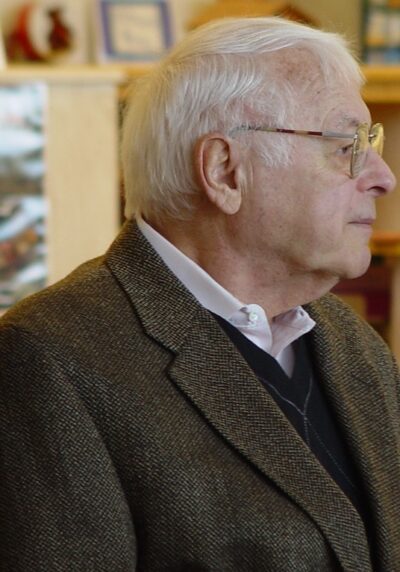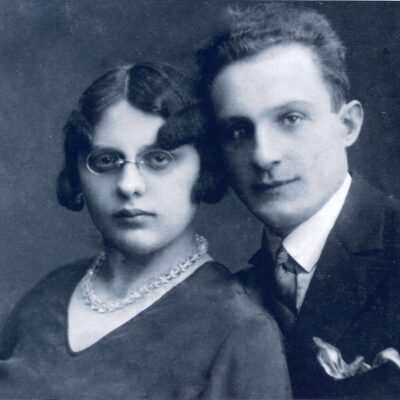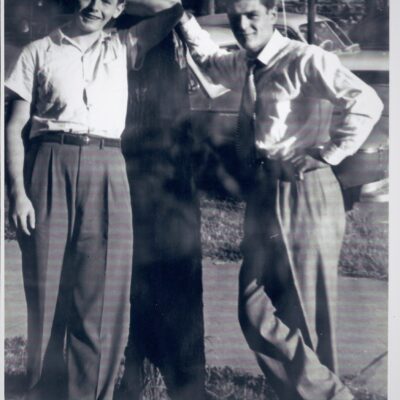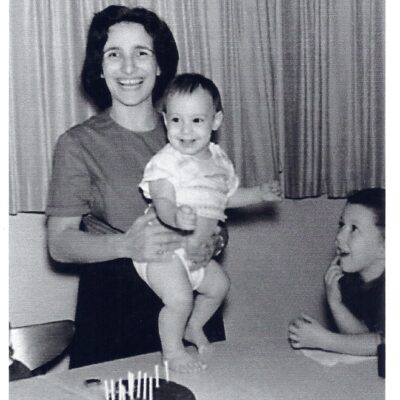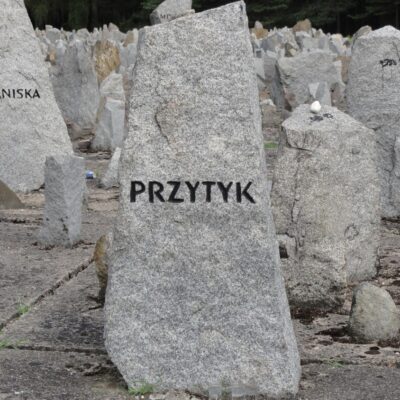Henry Aizenman
Biography
Henry Aizenman. One man with two birthdays: the first, to celebrate his arrival in the world in Warsaw, Poland, in 1931. The second, to celebrate his “rebirth”: the chance to begin life anew after his liberation by American troops in 1945 from Wöbbelin Concentration Camp near Ludwigslust, Germany.
Like other Polish Jews in the early 1930’s, Henry was no stranger to antisemitism in the small town of Przytyk where he was raised. His educated and Zionistic parents had hoped to immigrate to Palestine to help establish a Jewish homeland there, but because British policies mandated that they would have to leave their savings behind, they opted instead to remain in Europe, a decision that would cost them their lives.
The family became victims of the Nazi’s policy of using concentration camp inmates to keep the German war machine humming along.
Henry’s mother died in a munitions factory fire in Pionki, where, following the German invasion of Poland in 1939, Jews were rounded up and sent off to perform hard labor. Henry’s father, having survived Auschwitz because of his skills as a mechanic, later died at another work camp at Braunschweig. Prisoners at the camp told Henry that his father, having fallen ill, had been sent to the infirmary, where he had been murdered by the doctor, who injected him with a bubble of air.
Until then, young Henry had managed to endure the terror and starvation of incarceration because of his father’s presence: whether crammed together with other prisoners in the cattle cars that conveyed them from camp to camp … journeys lasting at times for over a week … or using as barter the sliver of pound cake mercifully thrown to Henry by an old woman as he walked to work his twelve-hour night shift, father and son had had each other.
Now orphaned, and following his liberation, Henry sailed to America. He moved to Birmingham in 1958, where he and his wife raised three children.
Somehow Henry managed to put the memories of the atrocities he had witnessed into what he called “little boxes,” keeping them tightly locked until some trigger pried one open. But he maintained that despite the horrors he experienced, he still believed in the basic goodness of humanity.
Darkness Into Life
This online exhibit of photography and art offers a special glimpse into the private memories of 20 Alabama Holocaust survivors, revealing stories of childhoods past, lost family and friends, despair and sadness, cruelty beyond belief, bravery, the joys of liberation, and new lives in Alabama.
Online ExhibitPhotos & Documents
More Information
Hanka (Hanna, Hannah) Zajde (Szajte) and Boruch (Baruch) Ajzenman
none
Barbara Deanne Weiner
(1937-
Married 1956 in New York
Divorced about 1973
David Burton Aizenman, M.D. (Teri)
Born 1958, Birmingham
Shari Aizenman (Clive Brown)
Born 1960, Birmingham
Mark Jeffrey Aizenman (Sally)
Born 1962, Birmingham
Jedlinsk Ghetto (Poland)
Wsola Air Force Base (German occupied Poland)
Pionki Munitions Factory (Poland)
Auschwitz II (Poland)
Fürstengrube (Poland) / Subcamp of Auschwitz
Braunschweig (Germany) / Subcamp of Neuengamme
Ravensbrück (Germany)
Wöbbelin (Germany) / Subcamp of Neuengamme
Ludwigslust, Germany
Zeilsheim, Germany (near Frankfurt/American zone)
Actually born in Warsaw, but lived most of his life in Przytyk.
At Auschwitz II, Henry was tattooed with the number B-21
Henry’s emigration was part of Eleanor Roosevelt’s program to relocate Jewish war orphans after World War II
Resources
-
Video Testimony
USC Shoah Foundation Interview
June 10, 1996 | Birmingham, AL

